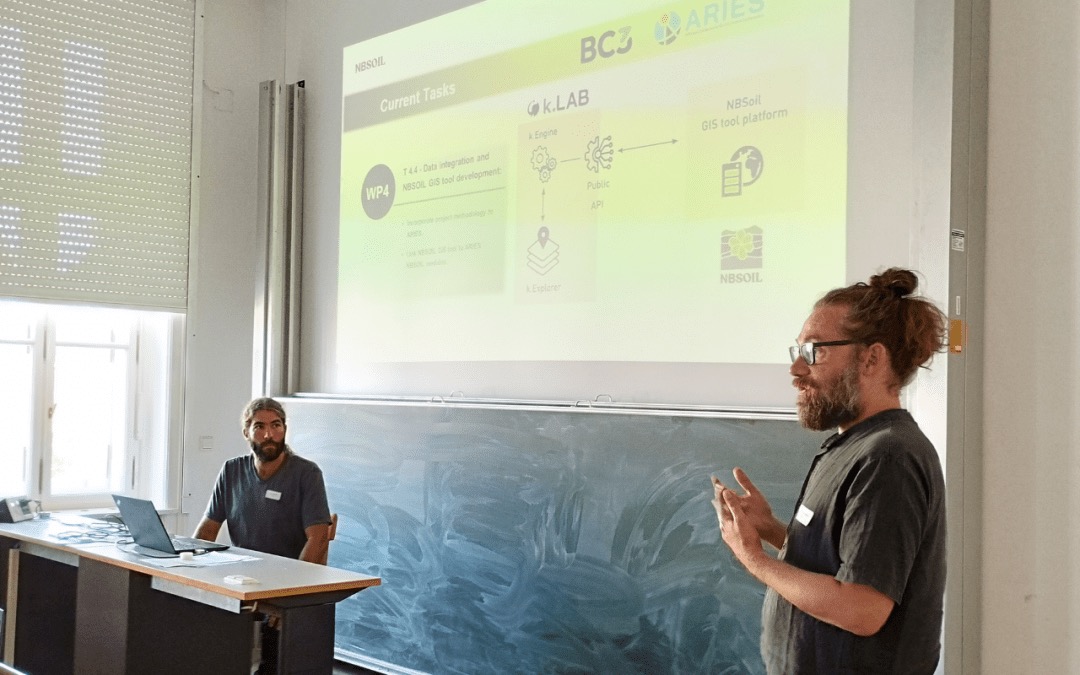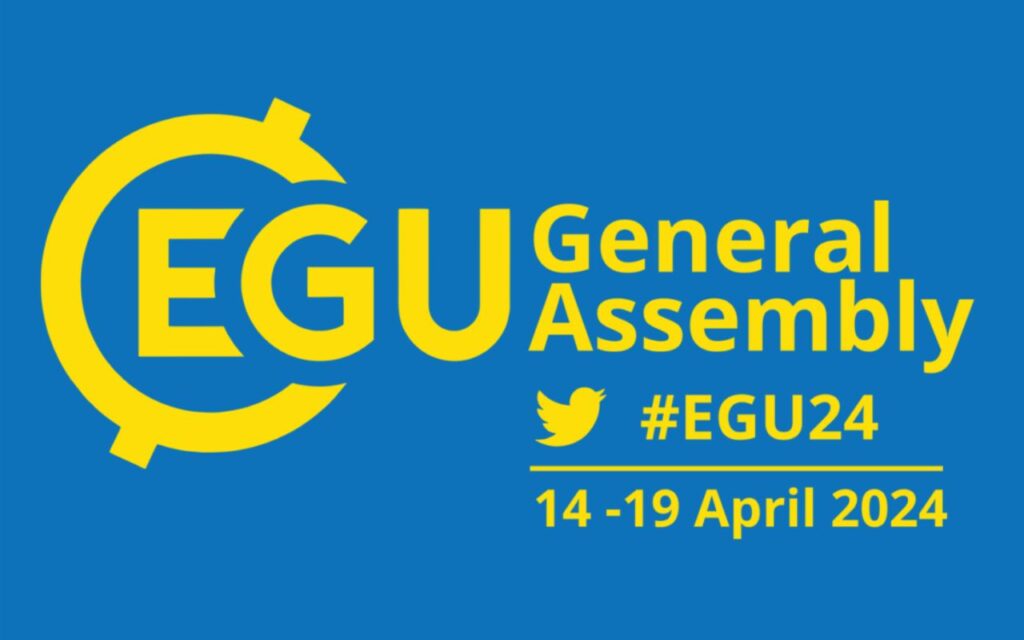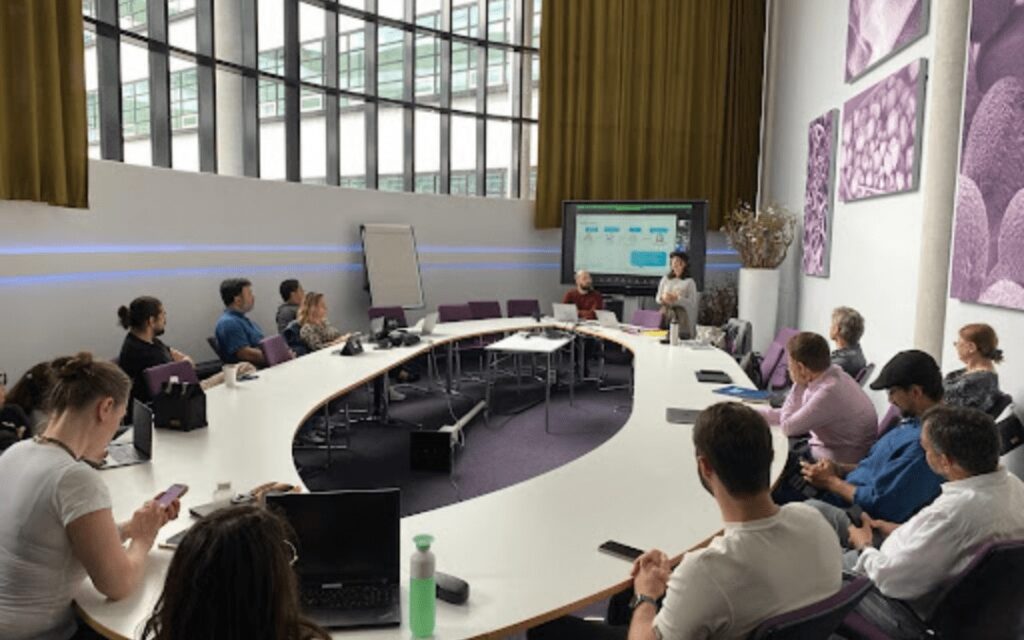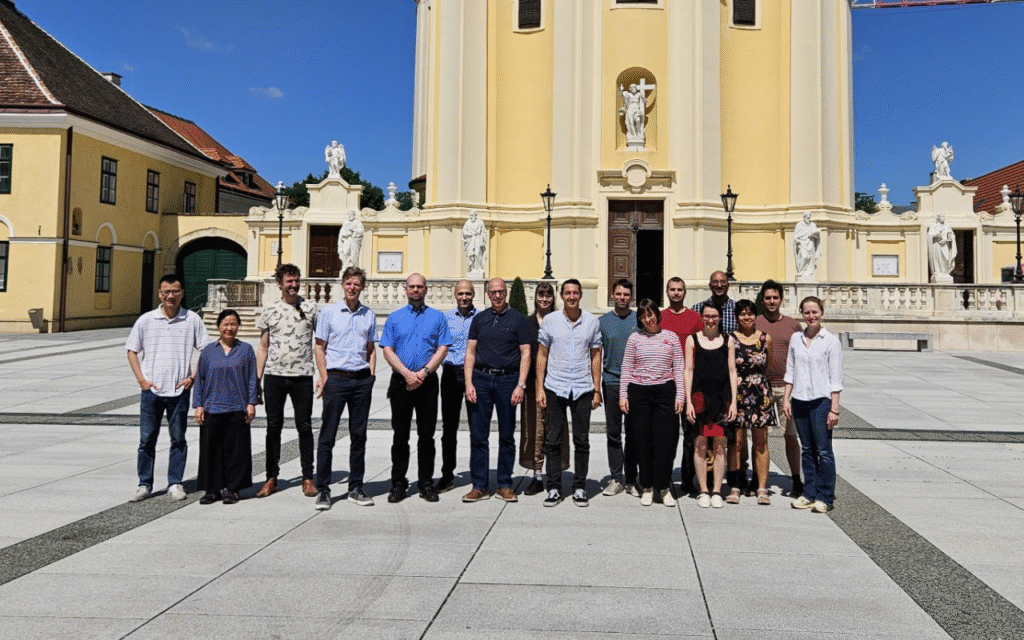As a part of the Nature Based Solutions for Soil Management (NBSoil) project, the ARIES team convened with the rest of the partners in the second NBSoil meeting in Vienna last September.
The project development meeting acted as a catalyst for advancing ongoing project initiatives, providing a dedicated moment for reflection and collaborative co-creation efforts. The gathering also facilitated a valuable opportunity for all partners to visit two of the NBSOIL demo sites situated in Austria.
During the event, attendees gained detailed insights into the conceptual framework of the NBS Academy. The discussion delved into essential aspects such as the NBS Academy’s instruments, the requisite input formats from NBS sites, and the seamless integration of GIS, models, and apps into the NBS Academy’s infrastructure.
The Vienna meeting featured significant contributions from ARIES and AgriSat, highlighting advancements in NBS digital tools.
ARIES, through BC3, provided a comprehensive overview of the ARIES-NBSOIL Open Library data integration methodology, showcasing the development progress of the application and explaining its intricate linkage to the NBSOIL GIS-Tool. A live demonstration of the ARIES-NBSOIL Open Library further highlighted the innovative strides being made in the digital field.
The ARIES-NBSOIL Open Library of soil health variables and models integrates soil-related resources provided to the NBSOIL GIS Tool. The Open Library uses AI to improve the findability, accessibility, interoperability and reusability (FAIRness) of the data. It is designed to improve the user experience with spatial data and models, dedicated but not limited to soil advisors. At the same time, the Open Library maintains the flexibility to incorporate the latest and most appropriate models and data for a given temporal and geographical context.
Joao Pompeu
ARIES researcher, BC3
The Vienna Meeting proved that collaborative efforts are shaping the future of soil management through innovative nature-based solutions. This ambitious project is expected to have a significant impact on soil health and sustainability. Visit the NBSOIL project website for more information and updates!





